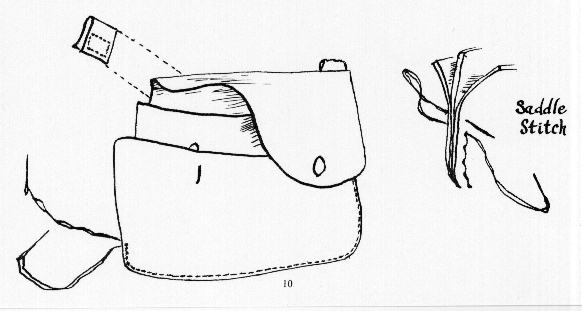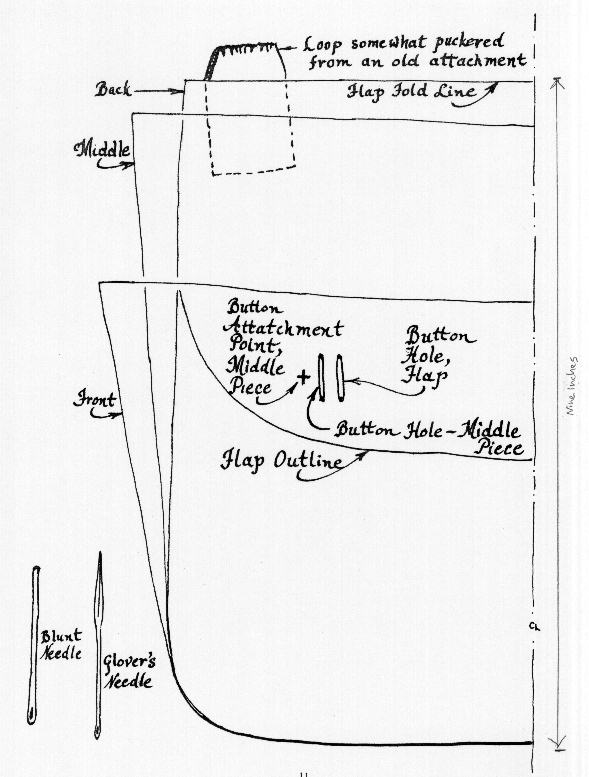This Pouch was donated to the Museum several years ago but it passed through several hands before it reached the Factor and all information about it has been lost.
This is a great pouch to use as a possibles bag. It is also a good shooting pouch, which was probably its original function. It is a two compartment bag which allows the front compartment to be used exclusively for rifle balls and patches - the only things you want for that second shot. When time counts you do not want to have to fish around through a pile of ticking, jags, cleaning flannel, and cap boxes as you jab a vent pick under your fingernail trying to find a rifle ball. Then you discover you have a fifty for your pistol (left back at camp) instead of the fifty-four you need for your long gun.
Putting all the necessaries for the tender loving care of your thunder stick in the back compartment of your hunting pouch can save you considerable time, pain, and distress.
Some features of this bag are, the leather pieces get progressively broader as they stack up from back to front. This gives more volume to the compartments without the extra work of sewing in gussets. Still the compartments don't "flop" open as they are kept snug by the two buttons that hold the compartments closed and at the same time keep the outside flap secure. The straps were no longer with the pouch when it was received by the museum. The tabs on the back indicate the straps were attached with a "D" ring, "O" ring, or perhaps a leather tie of some sort. The original was made of "settlement tanned" leather - not too thick - quite stiff (partially with age,) and saddle stitched bv hand.
The original buttons were metal with a loop back. Flattened horn, bone, hardwood, cast pewter, or shell buttons would be appropriate substitutes (not cross sections of antlers).
The pattern shown in the accompanying drawing is actual size. The back and the flap are, of course, one piece, but for the space restrictions of this publication are shown with the flap folded over.
Construction is obviously quite simple. Success comes easier if you start stitching at the center/bottom, going up one side and then the other. The tabs on the back are easier to stitch if they are sewed in place before assembly. Buttons may be sewed on or tied on with leather thong which is correct...easier...quicker.
The two needle saddle stitch goes up a bit easier if one needle is a glovers' needle (about a #5 or #6) and the second needle a common needle of about the same size but with the end filed flat and then polished. You will still have to use an awl even with the glovers' needle, but it will be easier. Important: always poke the glovers' needle through the hole first. Otherwise the thread on the blunted needle will be cut by the sharp edges of the glovers' needle.
The most authentic thread would be linen in 2 strand twist-bees waxed.
Our bag is very dark from age. It may have been dyed at one time, but it is very difficult to
tell now. A little oil and a lot of exposure to sun is great for darkening leather - especially
oak tanned. Good luck on your project.

